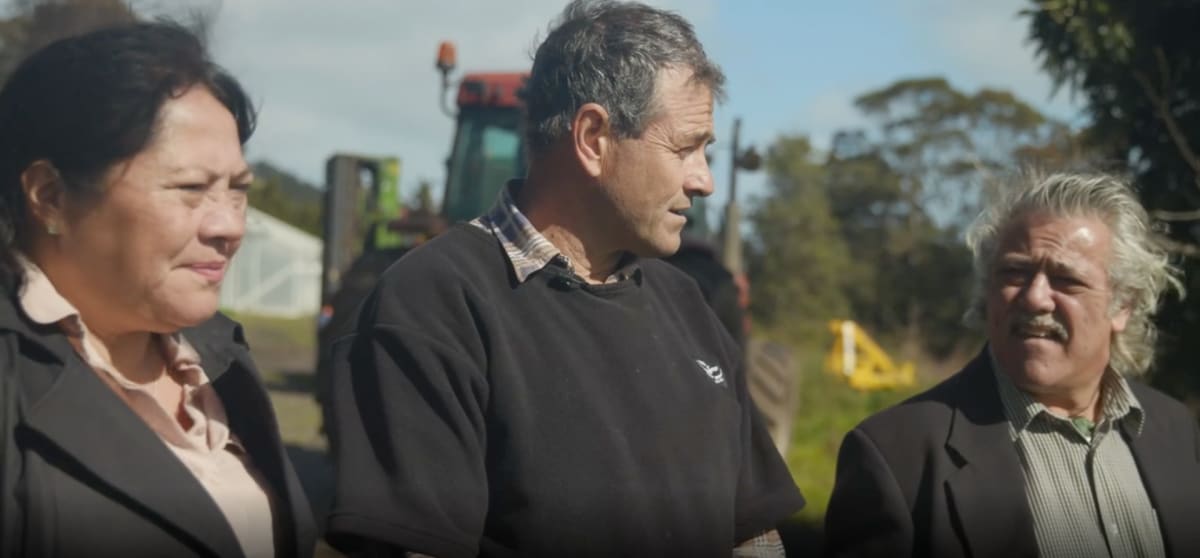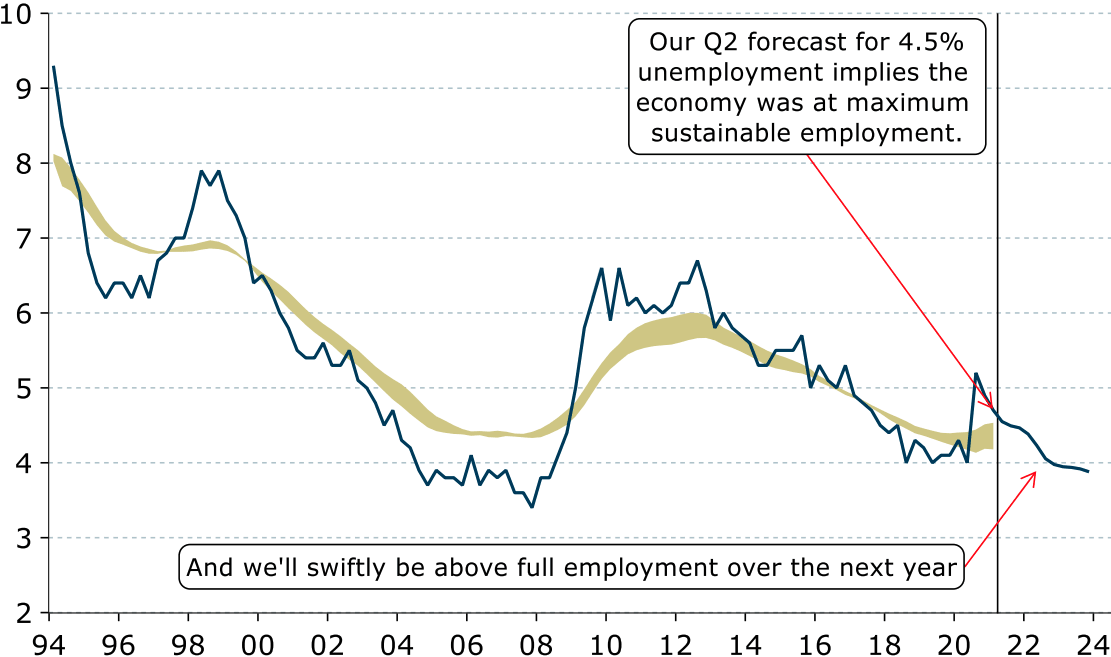Economy
The Reserve Bank is to decide next week whether the economy has hit ‘maximum sustainable employment’ – a concept that feels somewhat abhorrent to those still struggling to find work.
Manufacturing, farming, construction and hospitality – right across the board employers say they’re busting their budgets to recruit and retain staff as the economy hits capacity. And their warning of inflationary wage pressure will be considered by the Reserve Bank next week, amid expectations it will prepare to rein in the galloping economy.
Unemployment is at present estimated at 4.5 percent and trending down. But the Employers and Manufacturers Association argues it needs to be closer to 5 percent, to make it easier to recruit and retain staff, and constrain wage inflation.
Haami Piripi pauses, takes a breath. Tell that to young Māori seeking work in the Far North, he reckons; up there, the only job opportunities are at Juken NZ’s board mill, and an innovative market gardening business owned by Piripi’s iwi.
Te Rarawa bought the 240 hectare Bell’s Produce market gardens in 2019, and is training up and employing 60 people – many of them young iwi members – in the gardens, the packing shed, the trucks and even a green grocer’s next to the supermarket in Kaitaia. Nobody else is stepping up, says Piripi, the iwi chairman.
What do you think? Click here to comment.
Young people in the Far North don’t always have certain prerequisites employers are looking for, like driving licences, or the right mix of skills. But with a bit of support, they can get past those relatively small hurdles to entering the work force.
Up there near Ahipara, they’re growing mandarins, kumara, watermelons, corn … and getting them to market. “We’re using our own asset base to create opportunities,” Piripi explains. “Nobody else is doing this – but for us, it’s our people.”
This is pertinent, because the Reserve Bank monetary policy committee acknowledges that it’s difficult to make sweeping calls about the economy hitting “maximum sustainable employment” – a slightly unpalatable concept that the bank is required to consider in setting interest rates. The traditional measure – that unemployment shouldn’t be allowed to drop below 4 percent – disguises a patchwork of regional and sectoral variations.
“You couldn’t be comfortable that 4 percent is good if you had high levels of unemployment in Northland, or among Maori, or among youth,” he added. “So I think you’ve got to look at the broad range of indicators that give you comfort that employment is at a sustainable level and that it’s as good as you can get it.”
– Peter Harris, Monetary Policy Committee
The employment market may be as good as it’s ever been for white-collar workers considering their career and salary progression in Auckland, Wellington and Christchurch – but the prospects aren’t so good elsewhere.
Peter Harris, an external member of the Reserve Bank’s Monetary Policy Committee, has acknowledged that for all the outcry about house prices, it’s important to ensure people can find work throughout the country.
“The best social policy programme ever invented was employment,” he told Bloomberg business news agency this year. “Are people better off out of a job and owning a house and paying a high interest rate on their mortgage, or are they better off when employment is reasonably robust, where incomes are stable and mortgage interest costs are lower?”

At the last Monetary Policy Statement in May, the Reserve Bank said employment was still below its maximum sustainable level – but rising fast.
Asked how the bank would know when employment was at target, Harris said it used “a suite of indicators”. It doesn’t have an explicit target for the jobless rate, which has been as low as 4 percent in recent years.
“You couldn’t be comfortable that 4 percent is good if you had high levels of unemployment in Northland, or among Maori, or among youth,” he added. “So I think you’ve got to look at the broad range of indicators that give you comfort that employment is at a sustainable level and that it’s as good as you can get it.”
“It may sound strange to suggest that we’re at full employment, given that unemployment is higher than pre-Covid. However, full employment is a moving target, and there’s a significant chance that Covid-19 has had permanent (or at least highly persistent) impacts on the supply side of the economy, and the labour market in particular.”
– ANZ economics team
Council of Trade Unions chief economist Craig Renney echoes that. “It depends where you look, but there’s not a shortage of workers, there is however a shortage of skills,” he tells The Spinoff today.
“All the data says there are lots of people out there looking for work who can’t find it. Which suggests there’s something about the job, whether it’s low paid, it’s insecure or the location, that just makes it not attractive enough.”

In May 2020, the Reserve Bank published a figure known as NAIRU – the non-accelerating inflation rate of unemployment. That is a level of unemployment that does not cause inflation to increase. So if unemployment is at the NAIRU level, inflation is constant.
Economic texts say NAIRU represents the equilibrium between the state of the economy and the labour market. Back then, the Bank said NAIRU was somewhere between 4.2 and 4.8 percent.
In New Zealand, unemployment is already dropping through that range. It was 4.7 percent in the March 2021 quarter, bank economists calculate it has now dropped to 4.5 percent, and both the Treasury and the Reserve Bank forecast it will keep dropping towards the 4 percent marker when Statistics NZ publishes updated numbers early next month.
“The historical markers aren’t that good a guide – I think 4 percent is on the too-low side,” he says. “I think we’re probably better at 4 to 5 percent, in terms of getting access to people, than we are at 3 to 4 percent. I think we’re about there now, and that’s what’s causing a lot of the issues.”
– Alan McDonald, Employers and Manufacturers Association
Now, economists say the economy is hitting maximum sustainable employment, and the Reserve Bank must recognise that in its Monetary Policy Statement next week by setting the stage to raise interest rates. Higher interest rates mean it’s more expensive for businesses to borrow to invest in their companies, and it’s harder for them to take on workers.
ASB senior economist Mark Smith says the economy is effectively at, or close, to full employment. “Pressures on labour market and broader economy-wide capacity look set to tighten further, firming wage and underlying price pressures. The time for emergency policy settings has passed and OCR hikes are coming soon.”
ANZ economists Finn Robinson and Miles Workman agree: “It may sound strange to suggest that we’re at full employment, given that unemployment is higher than pre-Covid,” they report. “However, full employment is a moving target, and there’s a significant chance that Covid-19 has had permanent (or at least highly persistent) impacts on the supply side of the economy, and the labour market in particular.”

There is further nuance in the type of work that is counted to get to 96 percent employment. While the unemployment rate is dropping to 4.5 percent and lower, Statistics NZ says the under-utilisation rate (which includes those who are under-employed) still sits around the 12 percent mark.
In other words, those who could be or should me or might like to be or (to be blunt) need to be working more to feed their families comprise one in eight adults, members of the extended labour force.
The grittiest argument of all
Alan McDonald, the head of strategy at the Employers and Manufacturers Association, says 4 percent unemployment is too low a marker, and will drive accelerating wage inflation and recruitment difficulties.
“The historical markers aren’t that good a guide – I think 4 percent is on the too-low side,” he says. “I think we’re probably better at 4 to 5 percent, in terms of getting access to people, than we are at 3 to 4 percent. I think we’re about there now, and that’s what’s causing a lot of the issues.”
Two-thirds of those who are unemployed are essentially unemployable, he says, and the rest will be challenging.

McDonald acknowledges there are parts of the country – Northland, parts of the Bay of Plenty, Gisborne and Napier – where unemployment is still above 5 percent.
“To be fair there’s not a lot of employment in those areas anyway, but we’ve got long-term unemployed. That means they’ve got to move somewhere to get a job, and that’s hard work.
“And I think really what’s exacerbating the problem is, we haven’t got immigration. We might be able to cope with 3 to 4 percent unemployment, in terms of finding people, if we have the other side of the equation which is immigration.”
Credit: Source link










